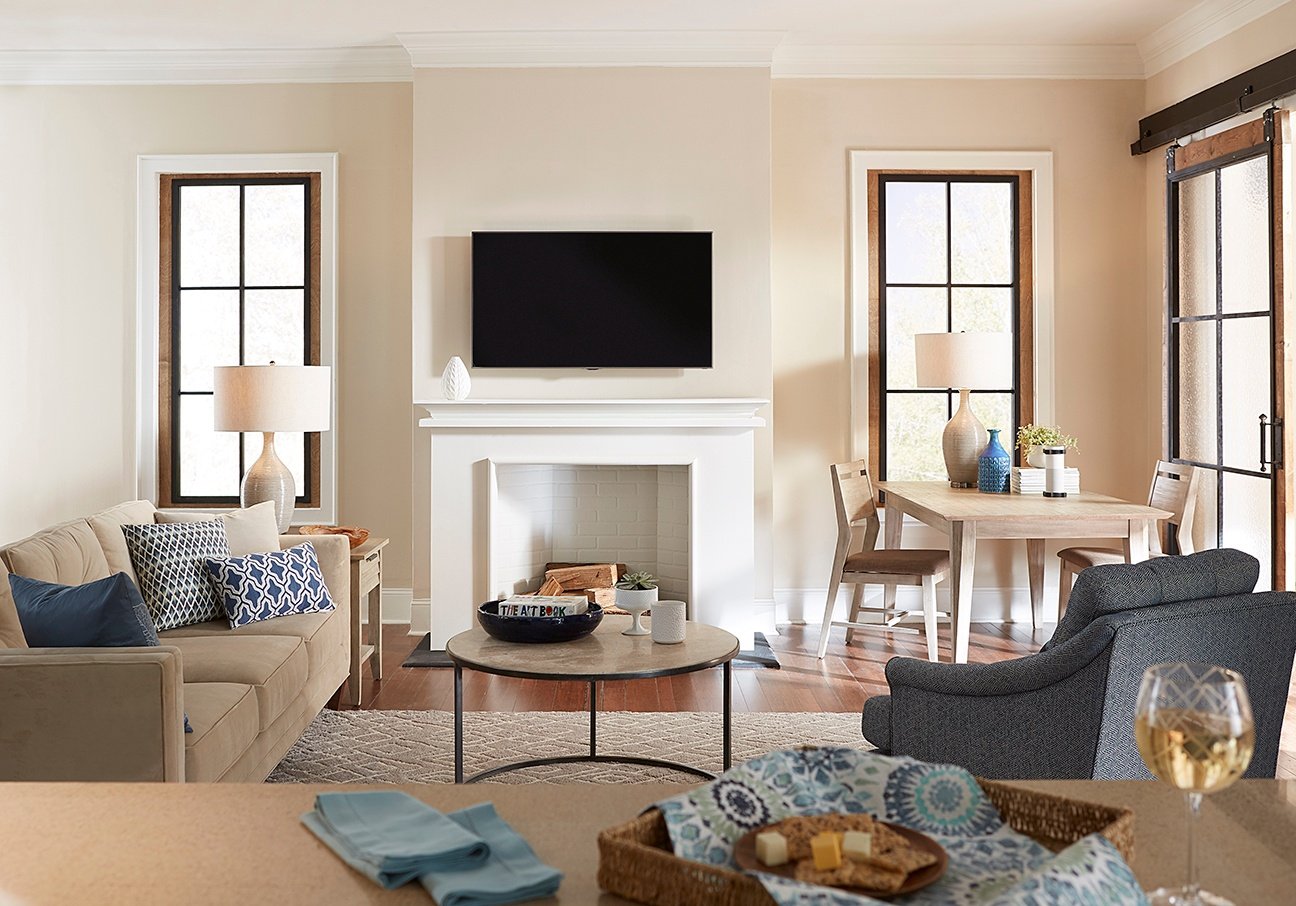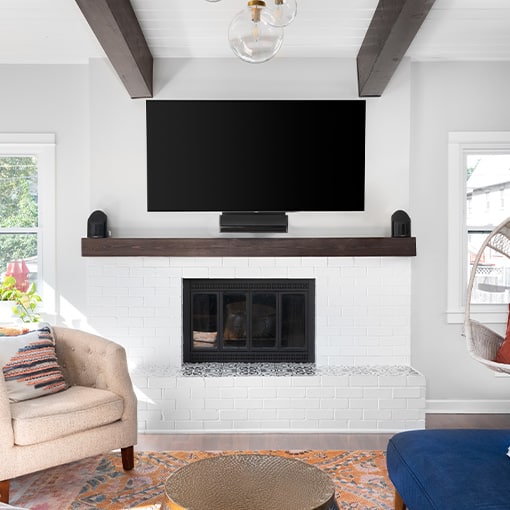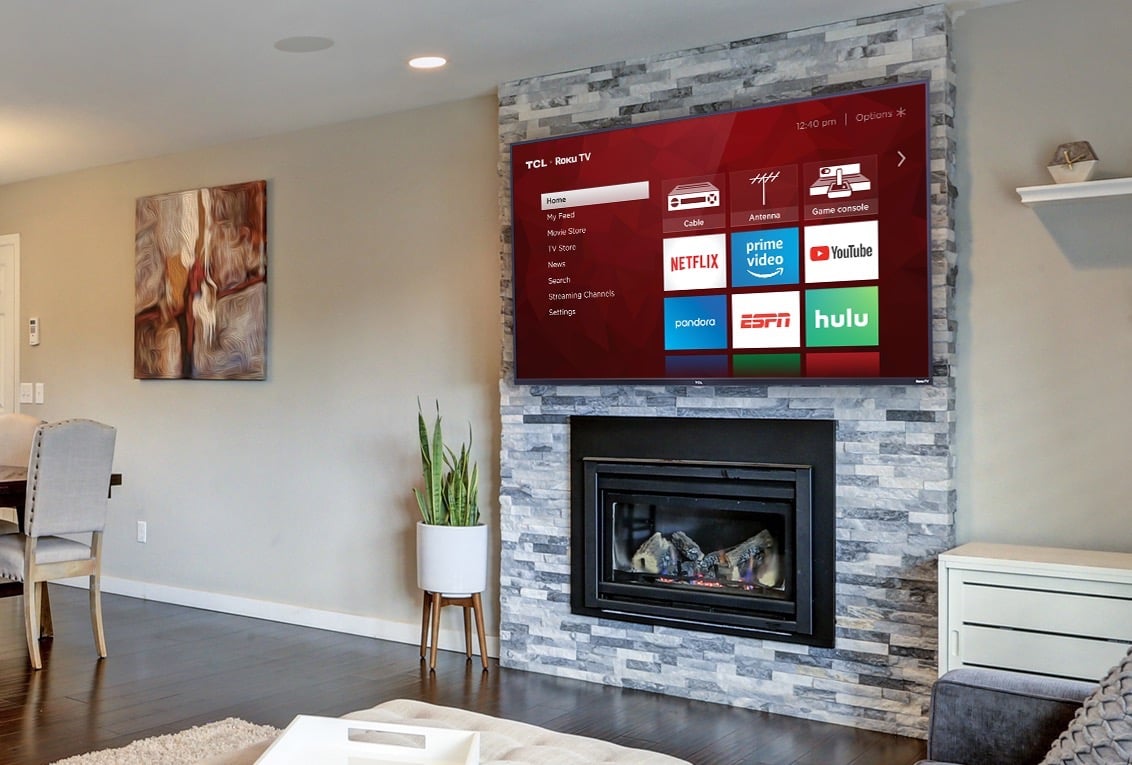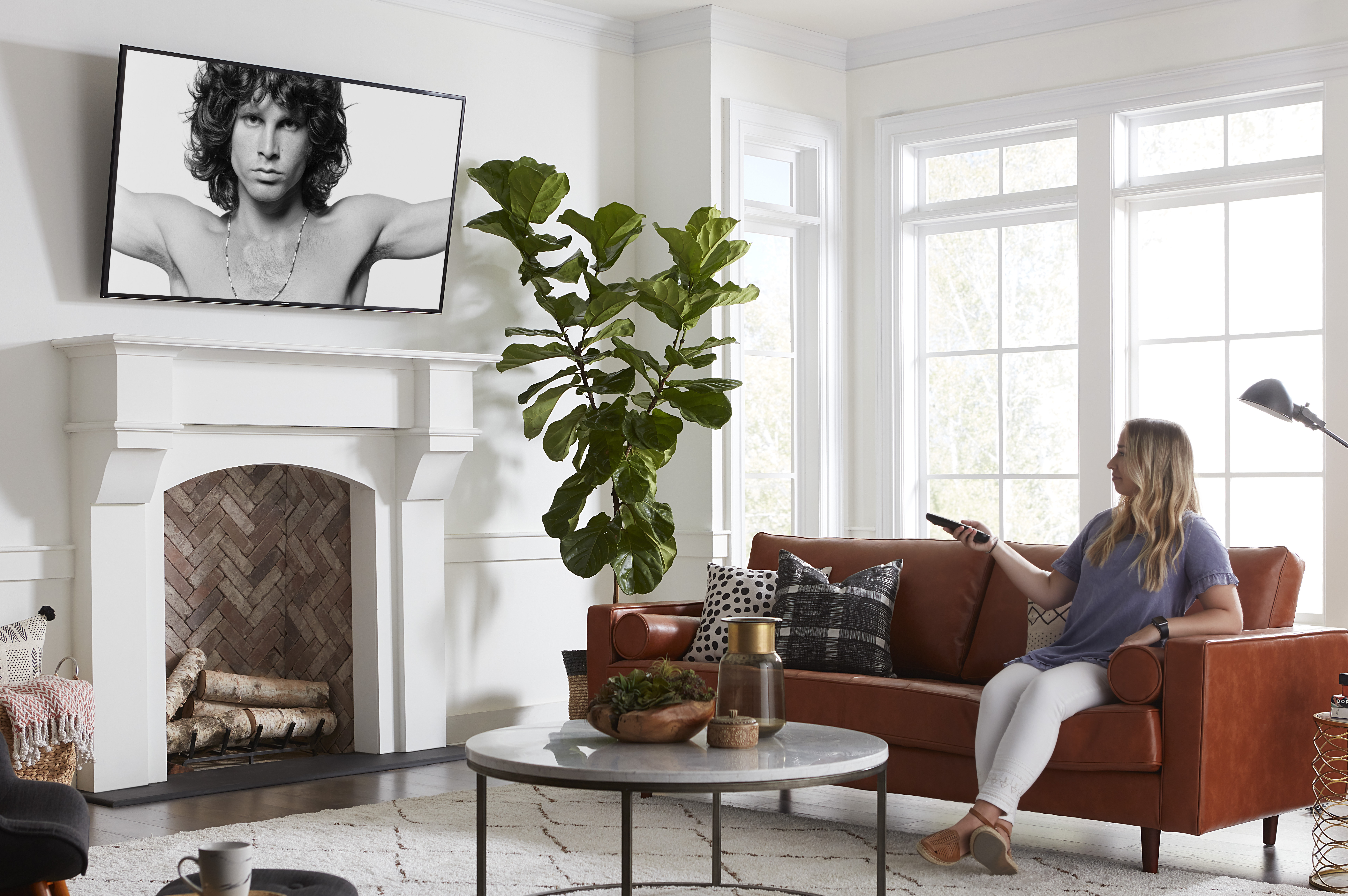Mounting a TV above a fireplace mantel creates a striking focal point while maximizing space in your living area. This popular arrangement combines warmth and entertainment in one central location, but requires careful planning to ensure both safety and optimal viewing. From proper height considerations to heat management, several factors contribute to a successful installation. Let’s discuss different aspects of mounting your television above a fireplace mantel for a functional and aesthetically pleasing result.
Determining the Ideal Mounting Height
The height of your TV significantly impacts viewing comfort and overall aesthetics. While mounting above the mantel might seem natural, positioning it too high can cause neck strain. I recommend placing the center of the screen at eye level when seated, typically 42-48 inches from the floor. This often means the bottom of the TV will sit 6-12 inches above the mantel, depending on your seating arrangement and TV size.
Consider your room’s layout before finalizing the height. If you have deep sofas or recliners that angle viewers slightly backward, you can place the TV slightly higher without discomfort. For rooms with varied seating distances, test different heights by temporarily mounting the TV with painter’s tape. The mantel’s height also plays a role; standard mantels sit about 54 inches from the floor, which may require adjustment for optimal TV placement.
In spaces with high ceilings or towering fireplace surrounds, I sometimes incorporate a mantel shelf extension to bridge the gap between the fireplace and TV. This creates visual continuity while maintaining proper viewing angles. Remember that while symmetry looks appealing, comfort should never be sacrificed for aesthetics when determining your TV’s height.
Choosing the Right Mount for Your Setup
Not all TV mounts work equally well above a fireplace. Full-motion articulating mounts offer the most flexibility, allowing you to pull the TV forward and angle it downward when in use. I prefer models with at least 15 degrees of downward tilt capability to compensate for the elevated position. Heavy-duty mounts rated for your TV’s size and weight are essential fireplace walls often require special reinforcement.
The mantel’s depth affects your mount selection. Standard mounts need 2-4 inches of clearance, while low-profile options can sit closer to the wall. For stone or brick fireplaces, I use specialized masonry anchors and often build out a mounting board to ensure secure attachment. If your mantel protrudes significantly, consider a mount with sufficient extension to clear the overhang when tilted.
Heat-resistant materials matter when selecting components. Metal mounts withstand fireplace heat better than plastic components. Some manufacturers offer fireplace-specific models with enhanced thermal protection. I always check the temperature ratings of both the mount and TV to ensure safe operation in this unique environment.
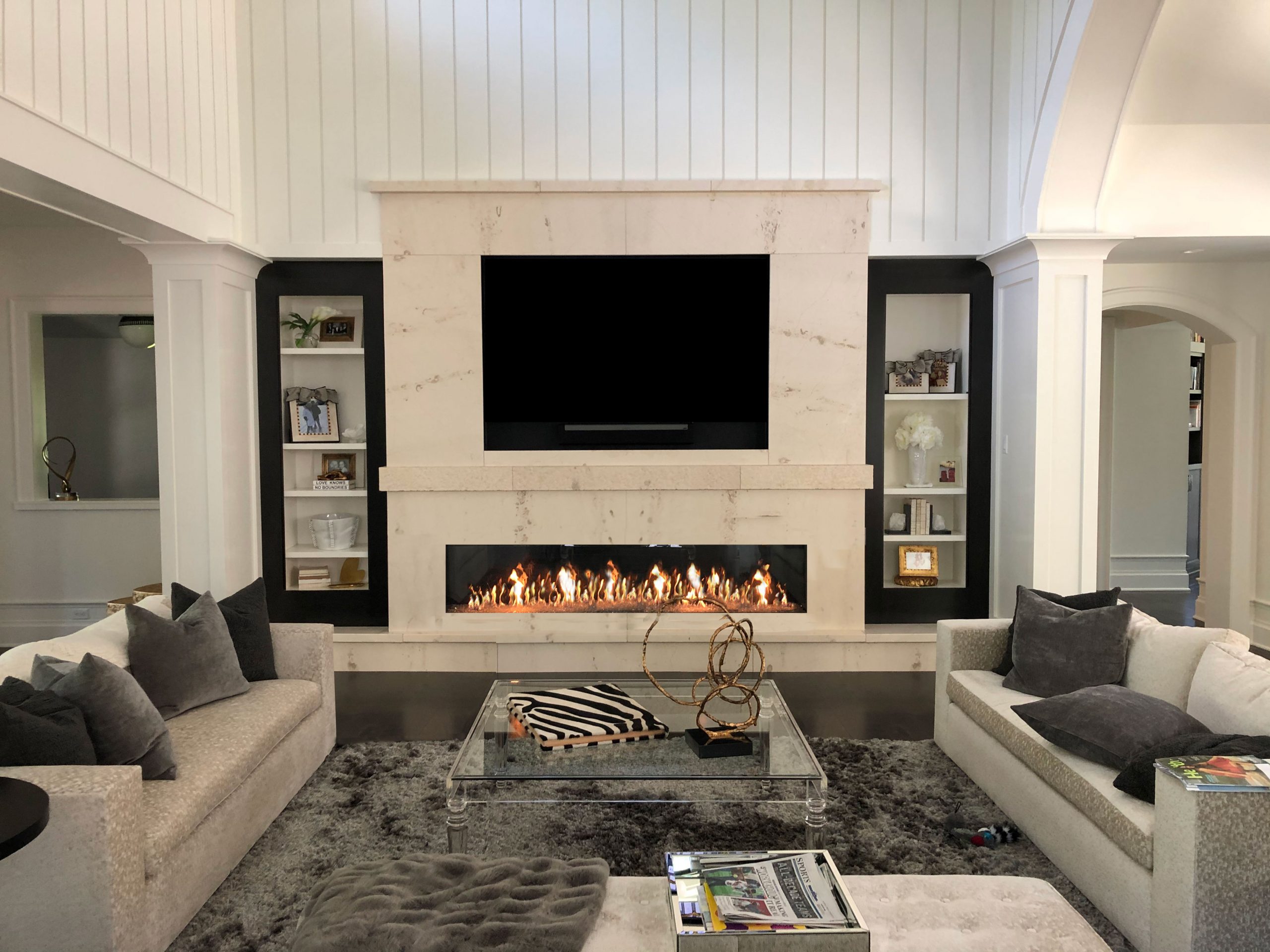
Managing Heat and Ventilation Concerns
Heat from the fireplace can damage electronics if not properly managed. I recommend maintaining at least 12 inches of clearance between the top of the mantel and bottom of the TV for wood-burning fireplaces, while electric units may allow slightly less space. Using a infrared thermometer, measure surface temperatures around the mounting area during fireplace operation to identify hot spots.
Ventilation strategies help protect your TV. Some installers add discreet USB-powered fans behind the TV to improve airflow. I often incorporate a heat shield, a non-combustible panel mounted between the fireplace and TV, to deflect rising heat. For frequent fireplace users, consider installing a mantel-mounted temperature sensor that alerts you if temperatures approach dangerous levels.
The type of fireplace affects heat management. Gas fireplaces with direct venting tend to produce less upward heat than wood-burning models. Electric fireplaces generate minimal heat at TV level, making them ideal for this setup. Regardless of fuel type, always follow manufacturer guidelines for both the fireplace and the TV regarding minimum clearance distances.
Creating Visual Balance and Harmony
The relationship between your TV and mantel should feel intentional, not haphazard. I aim for proportional balance, the TV width typically matching or slightly exceeding the mantel’s length. Oversized TVs on narrow mantels appear top-heavy, while small screens above wide fireplaces get visually lost. Generally, a 65-inch TV pairs well with a 60-inch wide mantel.
Materials and finishes should complement each other. A dark TV against a dark stone surround disappears, so I often incorporate a light-colored frame or backing panel to create contrast. Matching the TV’s bezel color to the mantel’s finish creates cohesion. For traditional wood mantels, consider a decorative frame around the TV to help bridge the style gap between modern technology and classic architecture.
Artistic elements can soften the transition between the mantel and the TV. Framed artwork flanking the television, or a shallow shelf installed just below it, helps integrate the components. I sometimes continue wall treatments like shiplap or stone veneer up to the TV mounting area to create a unified look. The goal is making the TV appear as an intentional part of the fireplace composition rather than an afterthought.
Cable Management and Power Solutions
Nothing ruins a beautiful fireplace/TV combination like dangling cords. I install in-wall cable management systems whenever possible, using rated in-wall power kits that meet electrical codes. For existing walls without easy access, paintable cord covers provide a cleaner look than exposed wires. Planning the power source location prevents unsightly extension cords. I often add a new outlet directly behind the TV location.
Smart home integration reduces cable clutter. Wireless solutions for sound systems, streaming devices, and gaming consoles minimize visible wiring. Some clients opt for a small cabinet or drawer built into the mantel to discreetly house media components. I always leave service loops of extra cable length behind the TV to allow for future adjustments or mounting changes.
Consider access requirements when finalizing your setup. Full-motion mounts need sufficient slack in all cables to accommodate movement. Labeling cables at both ends simplifies future maintenance or upgrades. For brick or stone fireplaces, surface-mounted raceways may be the most practical solution while still maintaining a tidy appearance.
Alternative Arrangements to Consider
Not every room suits the TV-above-mantel configuration. In some cases, I recommend placing the TV adjacent to the fireplace on a swivel mount, allowing it to angle toward seating areas. This works particularly well in rooms where the fireplace isn’t the natural focal point or where mantel height would force the TV too high for comfortable viewing.
Another approach uses a motorized lift that lowers the TV in front of the fireplace when in use, then retracts it to reveal the mantel when not needed. While more expensive, this solution preserves both the fireplace’s aesthetic appeal and optimal TV positioning. I’ve installed these in homes where clients want to maintain an unobstructed view of artwork or decorative mantel displays.
For smaller rooms, a corner placement might work better than centering everything on the main wall. Angled mounts allow both the fireplace and TV to share visual prominence without competing. The key is experimenting with different layouts using cardboard cutouts before committing to any permanent installation.
How high should a TV be mounted above a fireplace mantel?
The ideal height places the center of the screen at eye level when seated, typically 42-48 inches from the floor. This usually means the bottom of the TV sits 6-12 inches above a standard 54-inch-high mantel. I measure from the floor to the viewers’ eye level in their primary seating position to determine the perfect height. While aesthetics might suggest centering the TV on the wall, comfort should dictate the final placement to prevent neck strain during extended viewing.
Will heat from my fireplace damage the TV?
Heat can definitely shorten your TV’s lifespan if not properly managed. Wood-burning fireplaces pose the greatest risk, with heat rising directly toward the TV. I recommend maintaining at least 12 inches of clearance and using a heat shield for frequent use. Gas and electric fireplaces generate less heat, but you should still monitor temperatures during operation. Look for TVs with higher operating temperature ratings if mounting above an often-used fireplace.
What type of TV mount works best above a fireplace?
Full-motion articulating mounts provide the most flexibility, allowing you to pull the TV forward and angle it downward for better viewing. Look for models with at least 15 degrees of downward tilt and sturdy construction rated for your TV’s weight. Low-profile fixed mounts can work if your seating arrangement already accommodates the higher position. I avoid cheap plastic mounts in this application—metal construction withstands heat better and provides more secure support.
Can I mount a TV on a brick or stone fireplace?
Yes, but it requires special hardware and techniques. I use heavy-duty masonry anchors and often install a mounting board secured into the mortar joints for better weight distribution. A laser level ensures proper alignment on uneven surfaces. For thick stone facades, longer mounting bolts may be necessary. Always check that your fireplace structure can support the combined weight of both the mount and TV before proceeding with installation.
How do I hide cords when mounting a TV above a fireplace?
In-wall cable management systems provide the cleanest look, using rated power kits and recessed boxes. For existing walls without easy access, paintable cord covers mimic the wall surface. Some clients choose to run cables through the mantel itself or install a small power strip behind the TV. Wireless solutions for streaming devices and sound systems can significantly reduce visible wiring. Proper planning during installation prevents last-minute cord management challenges.
Is it better to mount the TV elsewhere if my fireplace is used frequently?
In homes where the fireplace sees daily use during colder months, an alternative placement might be more practical. I often suggest adjacent walls with swivel mounts that can angle toward seating areas. Another solution involves installing the TV on a different wall entirely and positioning furniture to enjoy both the fireplace and television comfortably. The right choice depends on your viewing habits, room layout, and how often you actually use the fireplace for heat.
Mounting a TV Above the Fireplace: Everything You Need to Know
TV Above The Fireplace! ideas tv glare, fireplace, design
Mounting a TV Over A Fireplace – How Does It Work? – ECHOGEAR
Related Posts:
- Fall Fireplace Mantel Ideas
- Colonial Fireplace Mantel Ideas
- Cottage Fireplace Mantels
- Antique Victorian Fireplace Mantel
- TV Mount Above Fireplace Mantel
- Fireplace Mantels Decorated
- Unique Wood Fireplace Mantels
- Gas Fireplace Mantel Kits
- Stone Fireplace Mantel Kits
- Fireplace Mantel Vintage
Mounting a TV above a fireplace mantel can be a stylish and space-saving solution for many living rooms. However, there are some important considerations to keep in mind before installing your TV in this location. In this article, we will discuss the benefits of mounting a TV above a fireplace mantel, how to properly install it, common mistakes to avoid, and frequently asked questions related to this topic.
Benefits of TV Mount Above Fireplace Mantel
Mounting your TV above the fireplace mantel can help save space in your living room and create a clean and streamlined look. It can also provide better viewing angles for everyone in the room, as the TV will be at eye level when seated on the couch. Additionally, mounting the TV above the fireplace can help create a focal point in the room and make it easier to arrange furniture around.
When installing a TV above a fireplace mantel, it is important to ensure that the heat from the fireplace will not damage the electronic components of the TV. You may need to use heat-resistant materials or a special mount to protect the TV from heat exposure.
Proper Installation of TV Mount Above Fireplace Mantel
Before installing your TV above the fireplace mantel, it is essential to measure the space accurately and choose a suitable mount that can support the weight of your TV. Make sure to follow the manufacturer’s instructions carefully when installing the mount and double-check that it is securely attached to both the wall and the fireplace mantel.
It is also important to consider the height at which you will be mounting the TV. Ideally, the center of the screen should be at eye level when seated on the couch. This will ensure comfortable viewing angles for everyone in the room.
Common Mistakes to Avoid
One common mistake when mounting a TV above a fireplace mantel is failing to account for heat exposure. It is crucial to ensure that the electronic components of the TV are protected from heat damage by using heat-resistant materials or a special mount designed for this purpose.
Another common mistake is improper installation of the mount. Make sure to follow all manufacturer’s instructions carefully and double-check that the mount is securely attached to both the wall and fireplace mantel.
Additionally, mounting the TV too high above the fireplace can result in uncomfortable viewing angles. To avoid this mistake, make sure that the center of the screen is at eye level when seated on the couch.
Lastly, failing to hide cables and wires properly can detract from the overall aesthetic of mounting a TV above a fireplace mantel. Consider using cable management solutions or hiring a professional installer to ensure that cables are neatly hidden from view.
Frequently Asked Questions
1. Can I mount any type of TV above a fireplace mantel?
While most TVs can be mounted above a fireplace mantel, it is essential to choose a suitable mount that can support the weight of your specific TV model.
2. Will heat from the fireplace damage my mounted TV?
Heat exposure can potentially damage electronic components of your TV if not properly protected. Consider using heat-resistant materials or a special mount designed for this purpose.
3. How high should I mount my TV above the fireplace mantel?
Ideally, the center of your TV screen should be at eye level when seated on the couch for comfortable viewing angles.
4. How do I hide cables and wires when mounting a TV above a fireplace mantel?
You can use cable management solutions or hire a professional installer to ensure that cables are neatly hidden from view and do not detract from your decor.
5. Can I install a soundbar with my mounted TV above a fireplace mantel?
Yes, you can install a soundbar with your mounted TV for an enhanced audio experience. Be sure to choose a soundbar that fits well with your setup and does not obstruct your view of the screen.




